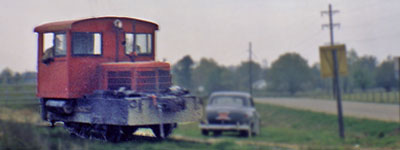
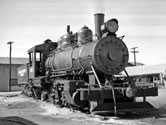

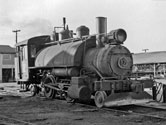




 Crown Zellerbach Corporation
Crown Zellerbach Corporation

To supply the huge amounts of pulpwood required by the growing Bogalusa Paper operation, the [Gaylord Container Company] started acquiring its own fleet of pulpwood cars in the 1920's. The fleet had grown to 309 "woodracks" by 1947, and the last additions were ten fifty-foot steel cars bought new in March of 1969. To expedite the shipment of pulpwood from the west, Gaylord purchased twenty miles of track between Hammond and Covington, La., on July 31, 1941, for $45,000. The line was Illinois Central's old Baton Rouge, Hammond & Eastern branch which had been built in 1908 and abandoned on March 1, 1934. For a few years after abandonment, the line was leased by the Natalbany Lumber Co. which ran pulpwood trains to Bogalusa from its operations just north of Hammond. The regular locomotives on this run, incidentally, were Natalbany Lbr. Nos. 101 and 201, an almost matched pair of Alco 2-8-2's. The 201 would later operate on the Denkmann Lumber Co. log train from Canton, Miss., to Florenville, La.
Louis Saillard, The Pulpwood Train
 The Crown Zellerbach Corporation operated a number of paper mills across the southeast.
Upon purchasing the Gaylord Container Corporation around 1954, the company took control of the large paper mill at Bogalusa, La.
To supply the mill with lumber, the company operated the GCC/CZ pulpwood train between Bogalusa and Hammond, La. where it interchanged with the Illinois Central.
The train utilized trackage rights on the Gulf, Mobile & Ohio between Bogalusa and Covington,
then continued west to Hammond on former Baton Rouge, Hammond & Eastern trackage it acquired.
Crown Zellerbach used green ALCO RS-1 road switchers and employed a green wooden caboose on its trains.
The Bogalusa-Hammond turn ended in 1970, when changing pulpwood traffic patterns no longer necessitated the run to Hammond.
The wooden caboose is on static display in downtown Bogalusa, albiet in disrepair.
The Crown Zellerbach Corporation operated a number of paper mills across the southeast.
Upon purchasing the Gaylord Container Corporation around 1954, the company took control of the large paper mill at Bogalusa, La.
To supply the mill with lumber, the company operated the GCC/CZ pulpwood train between Bogalusa and Hammond, La. where it interchanged with the Illinois Central.
The train utilized trackage rights on the Gulf, Mobile & Ohio between Bogalusa and Covington,
then continued west to Hammond on former Baton Rouge, Hammond & Eastern trackage it acquired.
Crown Zellerbach used green ALCO RS-1 road switchers and employed a green wooden caboose on its trains.
The Bogalusa-Hammond turn ended in 1970, when changing pulpwood traffic patterns no longer necessitated the run to Hammond.
The wooden caboose is on static display in downtown Bogalusa, albiet in disrepair.

RWH
Motive Power

Crown Zellerbach #302
Alco RS-1 / Bogalusa, La / 1973 / Tom Sink
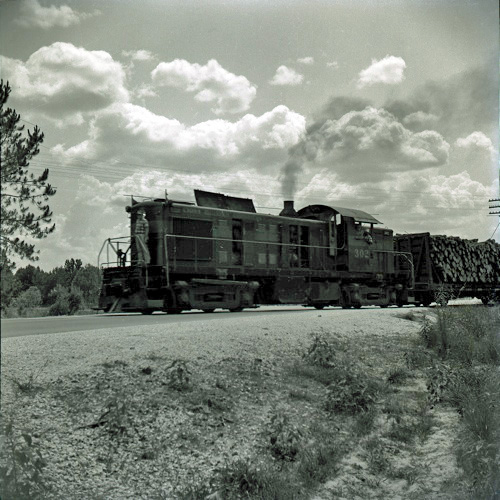
near Hammond, La / Oct 1960 / JCH
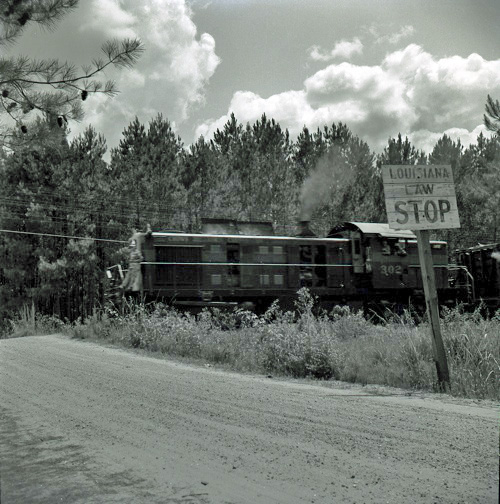
near Hammond, La / Oct 1960 / JCH
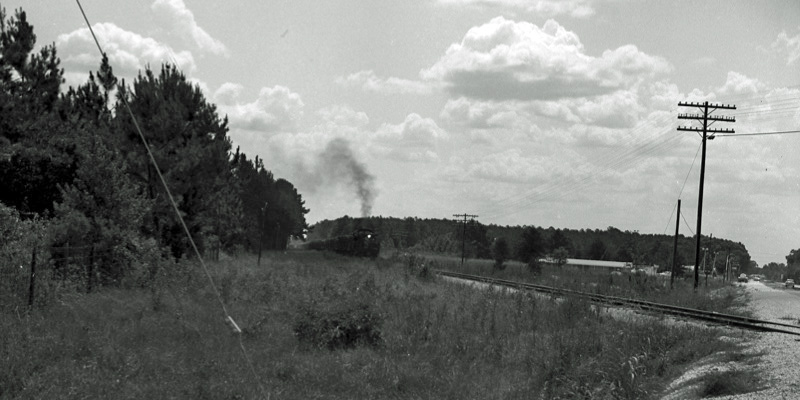
near Hammond, La / Oct 1960 / JCH
Rolling Stock

The original wooden caboose, not numbered but identified as caboose "A" was reportedly a former GM&N car. It was replaced in the 1950's by caboose "B" another wooden car purchased from a used railroad equipment dealer. For awhile in the 1960's the operation boomed while Crown Zellerbach attemped to salvage large amounts of timber west of Hammond which had been damaged by a hurricane. During this time the train ran six days a week. A GM&O RS-2 appeared on the train for a short time in the summer of 1966 while one of the Alcos was ailing, but generally through the years one unit ran to Hammond on the wood train while the other switched the Bogalusa papermill. The ten man section gang continued to maintain the 80-lb rail and bridges and Alco No. 303 ran to Hammond as late as June of 1970 to deliver a few cars to the ICRR, returning with only the caboose.
Louis Saillard

Crown Zellerbach caboose "B"
Bogalusa, La / Sep 1988 / RWH

Bogalusa, La / Sep 1988 / RWH

Bogalusa, La / Feb 2001 / JCH
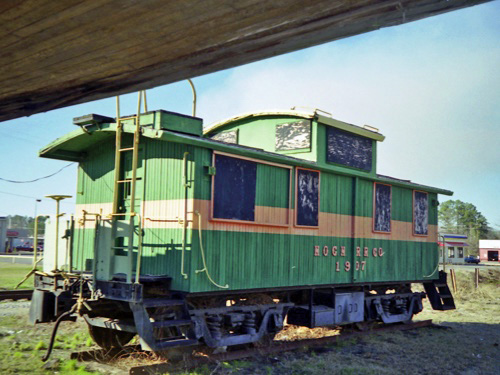
Bogalusa, La / Feb 2001 / JCH

Bogalusa, La / Feb 2001 / JCH
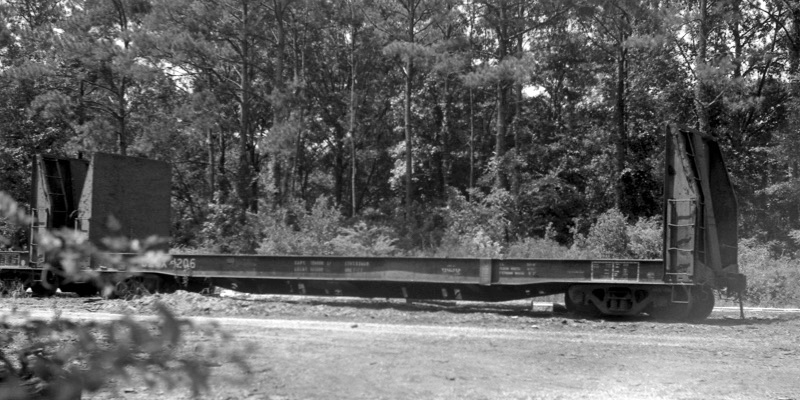
Crown Zellerbach #1206
50' pulpwood rack / Lacombe, La / Jul 1986 / JCH
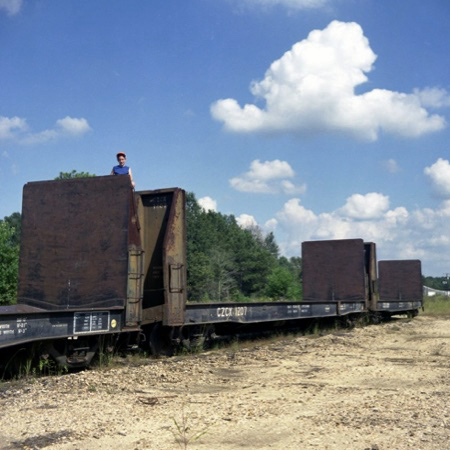
Crown Zellerbach #1207
50' pulpwood rack / Abita Springs, La / Oct 1986 / JCH
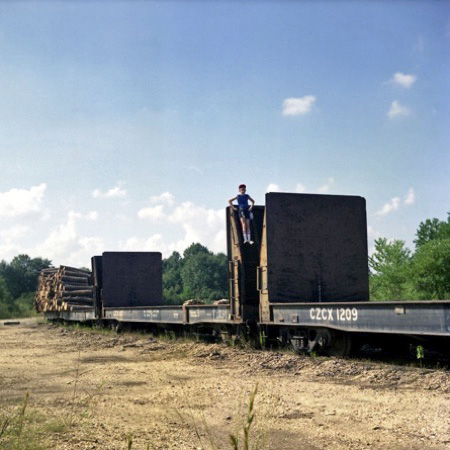
Crown Zellerbach #1209
50' pulpwood rack / Abita Springs, La / Oct 1986 / JCH
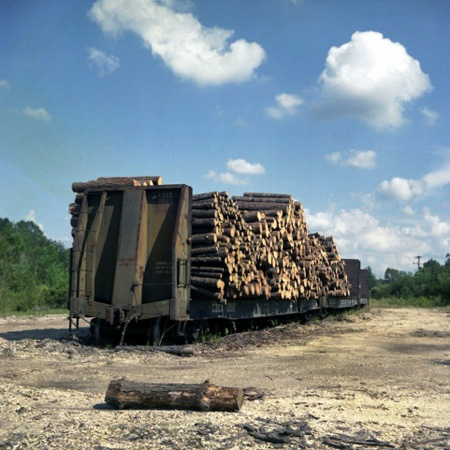
Crown Zellerbach #1202
50' pulpwood rack / Abita Springs, La / Oct 1986 / JCH
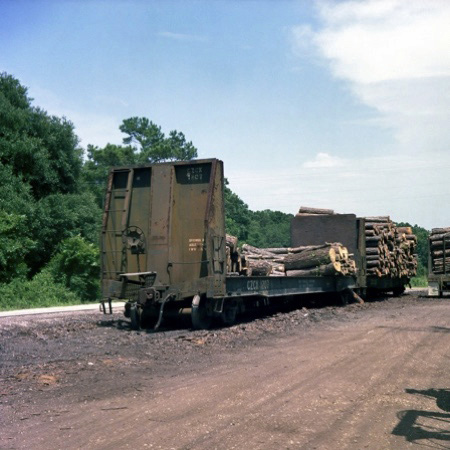
Lacombe, La / Jul 1986 / JCH

 Some boys are raised on stories of war, or sports, or crime. I was raised on tales of ALCOs, especially the ALCo products that rolled through my hometown of Covington, Louisiana, long before my days of bike riding on rail-lined streets.
My father told me stories from the mid-1950s, when he was courting my mother. He would drive over from New Orleans to see her at the weekend family home across the lake, and on the way out to Smartacres he would spin through town--on the off chance that something nifty was tied up there for the weekend.
One Sunday afternoon, he got lucky. A set of Gulf, Mobile & Ohio FA units were left by the depot, awaiting more local work on Monday morning. What a find ... and no camera! "Always bring a camera with you, son" he would tell me.
Some boys are raised on stories of war, or sports, or crime. I was raised on tales of ALCOs, especially the ALCo products that rolled through my hometown of Covington, Louisiana, long before my days of bike riding on rail-lined streets.
My father told me stories from the mid-1950s, when he was courting my mother. He would drive over from New Orleans to see her at the weekend family home across the lake, and on the way out to Smartacres he would spin through town--on the off chance that something nifty was tied up there for the weekend.
One Sunday afternoon, he got lucky. A set of Gulf, Mobile & Ohio FA units were left by the depot, awaiting more local work on Monday morning. What a find ... and no camera! "Always bring a camera with you, son" he would tell me.
The other ALCo products he spoke of often regarding our little town were the Crown-Zellerbach RS-1s that plied the rails eastbound with loaded pulpwood racks bound for Bogalusa and the mill. One day in 1960, he did have his camera with him and snapped the 120 negatives reproduced above: #302, laboring hard with a full load behind her, engine doors and roof panels wide open, as if the crew was coaxing her on through the long day. The ALCos and the entire C-Z train were long gone by my time in the town. But in my mind's eye, as he retold the story of chasing them several times, I could just see that long string of wood racks snaking its way through town, street-running along Gibson, holding up annoyed traffic with plenty of creaking cars and occassional slack action.
Oh for a dependable time machine! But, until that happens, I have stories.
Links / Sources
- St. Tammany Rails - AlphaRails.net
- The Pulpwood Train by Louis R. Saillard
